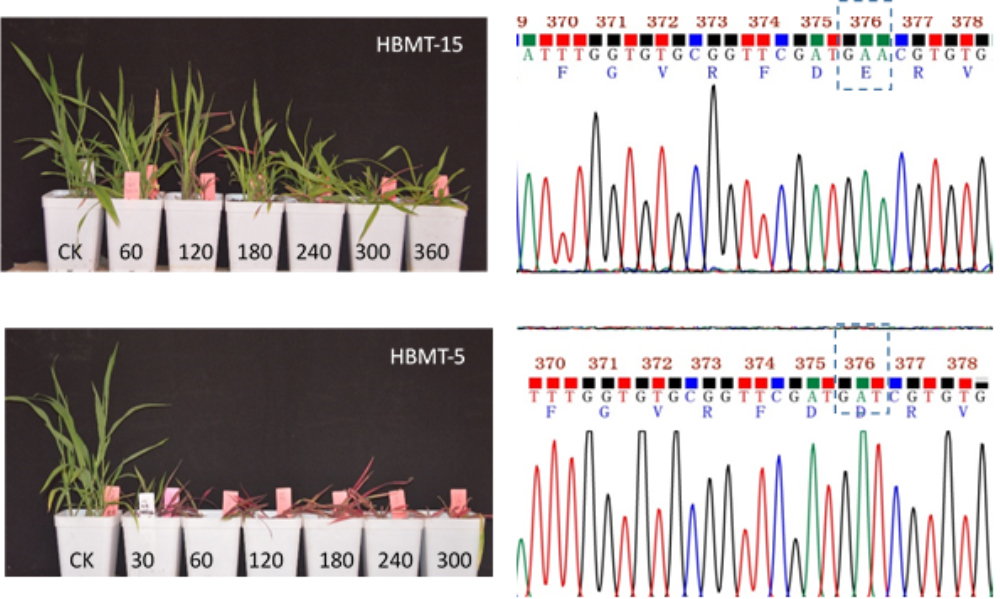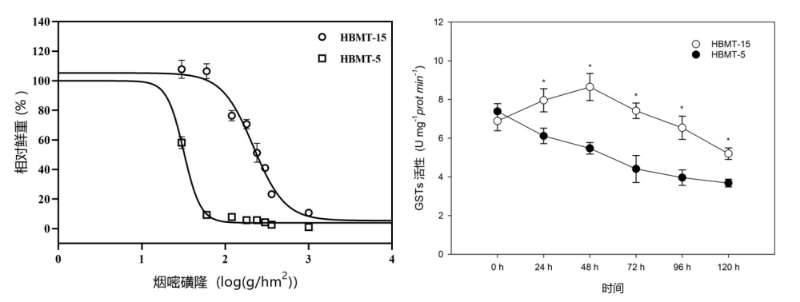Digitaria sanguinalis is an annual grass family plant belonging to the genus Digitaria, ranking 11th among the world's 100 kinds of malignant weeds. It is also a major weed in corn, soybeans, peanuts, cotton, sorghum and other crop fields in North China, which is harmful to crops and difficult to control. The ALS inhibitor herbicide nicosulfuron methyl has been used year-round in corn fields to control Digitaria sanguinalis. Currently, the phenomenon of reduced effectiveness of ALS inhibitor herbicides on Digitaria sanguinalis has begun to appear in production. Therefore, elucidating the resistance mechanism of Digitaria sanguinalis to ALS inhibitors and herbicides, scientifically and reasonably preventing and controlling weeds, delaying the development of resistance, and ensuring food security is of great significance.

Recently, the weed research group of the Institute of Cereals and Oil Crops published a research paper titled "Target site mutation and enhanced metabolism end now resistance to nicosulfuron in a Digitaria sanguinalis population" online in the top journal Pesticide Biochemistry and Physiology in Agricultural and Forestry Science Zone 1. Through indoor bioassay experiments on 268 populations of Digitaria sanguinalis distributed in different regions of Hebei Province, the resistant and susceptible Digitaria sanguinalis populations HBMT-15 and HBMT-5 to nicosulfuron were identified. Among them, the resistant population HBMT-15 also developed varying degrees of cross resistance to other ALS inhibitor herbicides such as fluazuron, pyrifosulfuron, and imidazolium nicotinic acid (resistance index 2-4). The cloning and sequencing results of the target enzyme gene ALS indicate that the ALS gene in HBMT-15 undergoes an Asp-376-Glu mutation, indicating that its resistance to ALS inhibitor herbicides is related to the target resistance mechanism. This mutation site is the first reported in Digitaria sanguinalis. After spraying the GST inhibitor NBD-Cl, the resistance level of HBMT-15 to nicosulfuron decreased to 47% of the original level. After treatment with nicosulfuron, the activity of GST in the sensitive population HBMT-5 was significantly inhibited, but it induced an increase in the activity of GST in the resistant population HBMT-15, which was significantly higher than that in the sensitive population HBMT-5, indicating that its resistance to ALS inhibitor herbicides is also related to the metabolic resistance mechanism mediated by GST.


Paper publication address:
https://doi.org/10.1016/j.pestbp.2023.105488
(Source from www.hebnky.com)